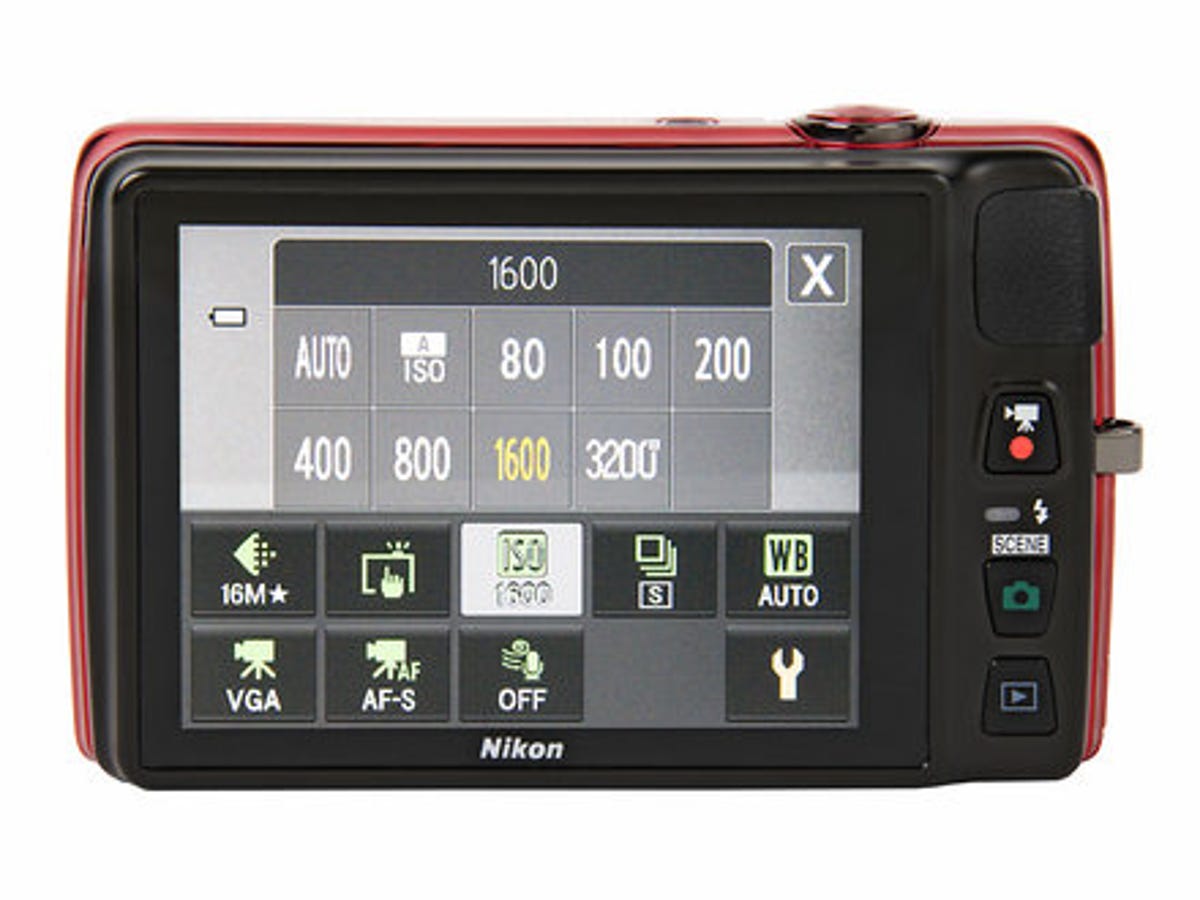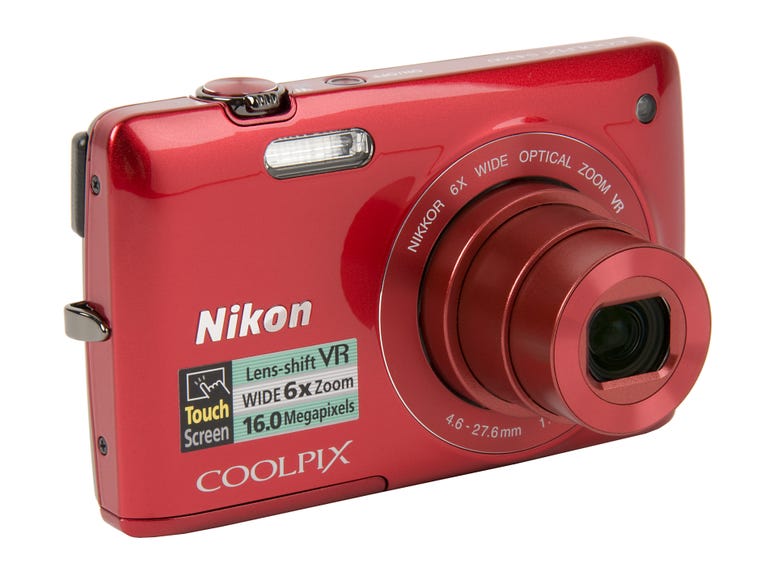 Why You Can Trust CNET
Why You Can Trust CNET Nikon Coolpix S4300 review: Nikon Coolpix S4300
You name it, Nikon's simplified it. Could the Coolpix S4300 be the perfect beginner's camera? It certainly comes close.
There are times when all you want is a simple camera to take to the pub or the beach. Not everyone likes to fiddle with settings, navigate three screens of options or have to understand aperture and focal lengths to get the best shot.
The Good
The Bad
The Bottom Line
Well, now they don't have to. The S4300 has had its settings and options stripped to the bare minimum, which means you can get on with enjoying the scenes in front of you while it works out how best to shoot them.
Build and specs
Despite its slim body, the S4300 is home to a 16-megapixel sensor and a 6x zoom, equivalent to 26-156mm on a regular 35mm camera. That makes it well suited at the wider end to broad landscapes, and at full-telephoto it will deal with close-up sports and wildlife shots. Maximum aperture ranges from f/3.5 at wide-angle to f/6.5 at full-telephoto, neither of which is particularly ambitious.

If you're looking for a simple point-and-shoot camera that takes you in hand, freeing you to think about framing and firing the shutter, then the S4300 might be for you. If you want a snapper that you'll grow with as you get more confident, look elsewhere.
The auto shooting mode is supplemented only by a choice of scene modes, special effects and smart portrait, so you can't set it to aperture or shutter priority. This limits your options when it comes to being creative.
While the shutter speed ranges from 1/2,000 to 4 seconds, for example, the decision on where to put it rests entirely with the camera. Four seconds is too short for the most creative night-time shots if you want to capture long streaking headlights and lit city scenes. Even if it wasn't, you wouldn't be able to select it manually outside of the fireworks scene mode, as the simple menu system doesn't offer this as an option.
You can set the white balance and sensitivity though, with the former offering five preset modes, plus auto and manual. This manual option is neatly handled. Selecting it zooms the lens to maximum telephoto, allowing you to frame a sample of white from your scene in a small window at the centre of the screen and use this as a reference point by tapping 'measure'.
The 3-inch LCD screen is bright and fine grained, with a smooth refresh and a touch-sensitive surface. This is important as the number of physical buttons on the S4300 has been kept to an absolute minimum, with only video recording, playback and scene buttons supplementing the regular power and shutter buttons and zoom rocker.
The full menu sits beneath a graphical tab at the bottom of the screen. There's no need to trawl it for the most common shooting options as there are icons for flash, timer (2 and 10 seconds), macro and exposure compensation along the bottom of the display. The latter offers +/-2.0EV in 1/3EV steps, updated in real-time as you tap graphics to move a pointer along the scale.
These icons disappear when you're shooting, at which point the whole screen becomes an enlarged shutter button. Tapping the subject you want in focus sharpens it up and fires the shutter.
Sensitivity sets out at ISO 80 and extends to ISO 3,200, although at the top end of the scale it cuts the resolution to 4 megapixels. This isn't uncommon, with many consumer cameras trimming the number of recorded pixels in high ISO shots so that they can interpolate data from adjacent photosites to build up the image. But it does mean that if you want to make full use of that 16-megapixel sensor, you'll have to keep sensitivity at ISO 1,600 or below.
Stills tests
Macro mode takes you in to 5cm from your subject. You can invoke it manually or leave the auto mode to select it when needed -- an option I found both reliable and predictable.
Results are sharp, with a clearly-defined sweet spot at the focal point. However, with the maximum aperture at wide-angle topping out at f/3.5, the focal fall-off wasn't as fast or extreme as I would have liked, with a lot of the image remaining fairly sharp in my tests.
However, in a more general wide shot, that maximum wide-angle aperture is fine for throwing backgrounds out of focus, with attractive, velvety results. There's an impressive level of detail at the front of this shot -- both in the rusting chain and the gravel -- and a gradual fall-off further back.
Detail was good when viewed full screen, and colours were accurate throughout my tests. When used outdoors under bright, clear conditions, the S4300 produced a really punchy set of pictures. The image below is dominated by red, green and blue -- the three colours of light to which a camera's sensor is receptive -- and the colour recognition can't be faulted. You can see a natural-looking sky, accurately captured grass and plenty of variation in the tones of the church walls.
Zooming to 100 per cent reveals some dappling in the brickwork. Closely examining the edges, and in particular the corners, reveals some significant loss of detail in the image. This is caused by the way in which all cameras have to bend the incoming light to focus it on the sensor.
Furthermore, there is some evidence of detail lost through compression, as can be seen on the inscriptions on these gravestones, which have a muddied finish.
On the whole though, it does a very good job of aligning each of the tones that make up the visible spectrum. It avoids introducing fringing around fine details, such as trees, or along sharply-contrasting edges.
Video test
The S4300's default movie resolution is 1,280x720 pixels at 30 frames per second. You can step this down to 640x480 pixels for web use or to conserve space. There's a dedicated movie button beside the rear LCD that starts recording as soon as it's pressed, using whichever white balance settings you've selected for stills.
Results are on a par with what I've come to expect from a pocket consumer camera, with good compensation for changing light levels, and strong colours, but quality that falls short of what you'd expect from a dedicated video camera. There's digital noise in the results, where still subjects with lots of fine detail, such as foliage, appear to embody some movement.
The soundtrack is well recorded, although you'll want to make use of wind noise reduction feature when shooting in gusty conditions. The biggest disappointment is that to avoid the S4300's slightly noisy zoom mechanism on the audio recording, the optical function has been shut off. That leaves you with only the digital zoom.
This poses two problems. Firstly, you can't zoom out any further than your initial shooting position, so if you're already halfway through the optical zoom when you switch to movie mode, you can't get back to wide-angle without stopping the recording. Secondly, because digital zoom relies on cropping and enlarging the central part of the image, it's working with progressively smaller amounts of data, which means the results are less well defined the closer you zoom.
Conclusion
The S4300 comes close to being the perfect novice's camera. Anyone could pick it up and use it and be fairly sure that they'd get a decent set of results. The lack of manual controls makes it unthreatening, and Nikon has done an excellent job of taking away all responsibility for working out the best combination of aperture and shutter speed. This leaves you needing to think about nothing more complicated than how to frame your subject and when to fire the shutter.
It looks good, it's small, and so long as you're happy navigating its sparse controls by way of the touchscreen, it's fun to use too.


